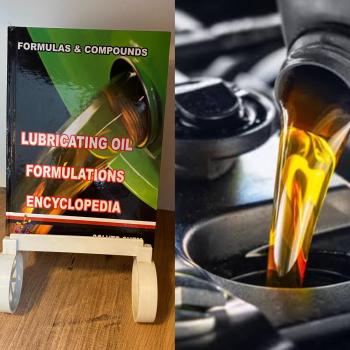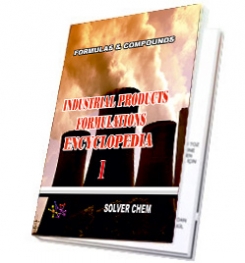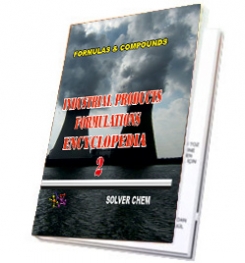
Food-grade greases are used in various food-processing equipment and other industrial equipment applications. These include plain and rolling element bearings, joints, linkages and slides, centralized lubrication systems and enclosed gearboxes.
Food-grade greases must not only perform the same technical functions as any other lubricant, they have other demanding requirements including:
-
Resisting degradation from food products, chemicals, water and steam.
-
Exhibiting a neutral behavior when in contact with elastomers and plastics.
-
Being physiologically inert, odorless, tasteless, nontoxic and harmless.
Strict Guidelines
In addition to these demanding properties, incidental food contact lubricants in the United States and other countries must comply with the U.S. Code of Federal Regulations (CFR), Title 21, Section 178.3570 and other sections referenced therein. Section 178.3570 provides a list of substances that can be used to prepare food-grade lubricants and the limitations on the concentration of each substance. Sections referenced in 178.3570 list ingredients that are generally recognized as safe (GRAS) for use in food, which corresponds to Sections 182 and 184. Lubricant formulations may contain synthetic oils, edible oils such as soybean, cottonseed and corn oil, or white mineral oil. If mineral oil is used, it must comply with Section 178.3620(a), 178.3620(b) or 172.878. These sections list the purity requirements for white mineral oil, including the color and ultraviolet (UV) absorbance limits.
Lubricant Categories
According to the National Sanitation Foundation's (NSF) Nonfood Compounds Registration Program and the previous United States Department of Agriculture's (USDA) Nonfood Compounds Authorization Program, which preceded it, there are three categories of lubricants used in food processing, designated H1, H2, and H3. H1 lubricants are intended for use in areas where the lubricant may come in contact with food during processing. H2 lubricants are for use in areas where there is no possibility of food contact. Neither H1 nor H2 lubricants are intended for direct food contact or to be a component of the food. The third category, H3 lubricants, are products used to prevent rust on hooks, trolleys and similar equipment. H3 lubricants may be composed of any of the following: edible oils, mineral oil complying with 21 CFR Section 172.878, and GRAS substances.
A notable property of H1 and H2 lubricants is they are both considered nonfood compounds, which are products intended for use in and around food processing areas, but are not intended for direct food contact or to become a component of the food. However, because H1 lubricants were created with the potential for food contact, the formulary requirements for H1 products are more stringent than those for H2.
Manufacturing Case
Manufacturing procedures vary by thickener type. Regardless, the oil is added to a reaction vessel. As previously discussed, these oils may be synthetic oils, edible oils or white mineral oils. The viscosity of the base oil varies depending on the application using the grease. The thickener components are added, and in the case of a soap thickener such as a calcium 12-hydroxystearate, the 12-hydroxystearic acid is melted at around 180°F. At this point, calcium hydroxide is added with heating to around 220°F. Once the reaction is complete, the mass is heated to around 400°F to a full melt and then cooled to recrystalize the soap fibers. This material may then be pumped to a finishing kettle or left in the reaction vessel to finish. Additional oil is then added to cool the mass below 180°F, which allows the additives incorporating antiwear, corrosion prevention and oxidation resistance components to be mixed in. The grease may be passed through a colloid type mill, homogenizer or other finishing equipment. Normal safety procedures required during this process include wearing safety glasses, gloves and an apron.
Testing the Finished Product
Quality control procedures typically require a sample to be taken after the batch is finished processing. The samples are then processed through a quality control laboratory to measure (among many parameters) the dropping point, unworked and worked penetration, and color/clarity. Once approved against quality standards, the grease may be packaged and retested against the same standards. Information can vary from one manufacturer to another; therefore testing each sample is important for satisfactory results.
industrial lubricating grease oils
LUBRICATING OIL
FORMULATIONS
ENCYCLOPEDİA
is enough.
LUBRICATING OIL FORMULATION ENCYCLOPEDIA has many formulations of greases, complex grease, lithium grease production,sodium greases formula, formulation,multigrade engine oils manufacturing process,motor oils making, gear oil production, synthetic engine oils,semi synthetic motor oils,gasoline oils,diesel oils production process,composition of turbine oils,transmission oil manufacturing, production of cycle motor engine, tractor oils,mineral based motor engine production,heat transfer oils, slideway oils formulation, formulations, cutting oils formula,formulas grinding oils,mould oils manufacturing process and etc.
All lubricating oils in the encyclopedia are producible easily.You need no help and no technıcal support. The encyclopedia is enough to produce lubricating oils and engine oils itself.
LUBRICATING OIL
FORMULATIONS
ENCYCLOPEDIA
is written clear and understandable.


HARD BOOK E BOOK
RELATED TAGS: What is complex grease,making sodium complex grease oil, lubrication oils,lubricating oils,how to make lithium complex grease, calcium complex greases production process,where to use grease, using of grease,aluminum complex grease making, composition of complex greases, properties of grease,preparation of greases,compounds of greases, barium complex grease making, analysis of greases,why to use grease, types of grease,content of complex greases, formulation of complex greases, make complex grease,how to use complex grease, high performance complex grease oil making,sodium complex grease msds, what is black grease, how to make black greases, properties of black grease,how to color of greases, specification of lithium grease,technical analyzes of greases,mineral oil based grease making,make synthetic oil based grease oils, production of lubricating greases,what is industrial grease,industrial grease composition,compounds of industrial greases, grease lubrication,high temperature grease,how to make high temperature greases,extreme pressure grease production,extreme pressure industrial grease,composition of extreme pressure grease,high speed grease,low tgemperature greases,how to make high speed grease,composition of high speed and low temperature grease,how to make biodegradable grease,making biodegrable greases,properties of biodegradable grease,composition of biodegradable grease,formulation of biodegradable grease, formula,formulas,compounds of biodegrable greases.

|
|

|
|

|
|
